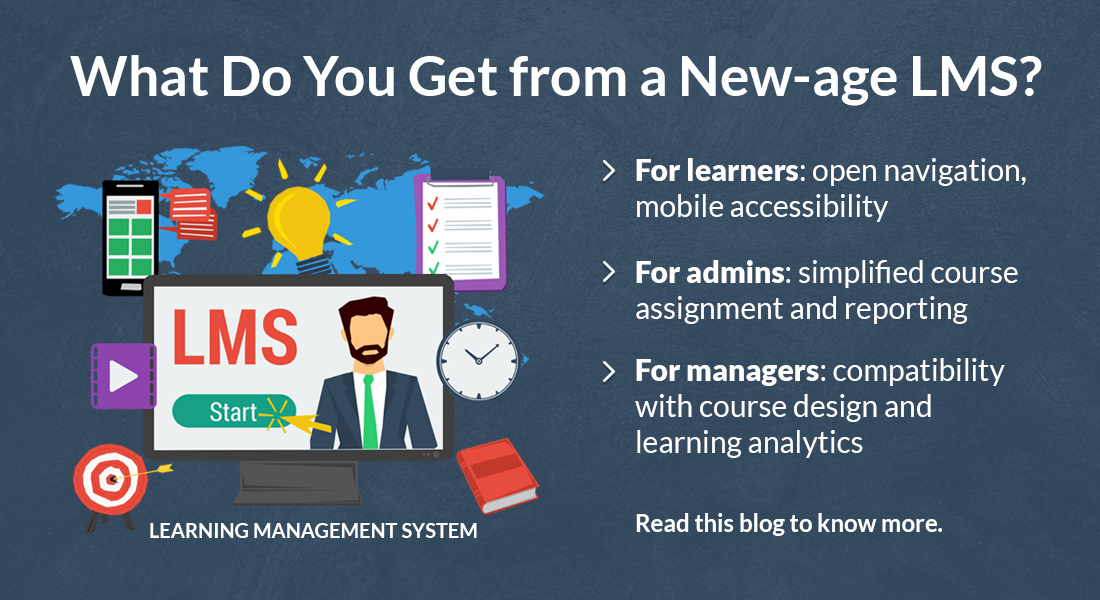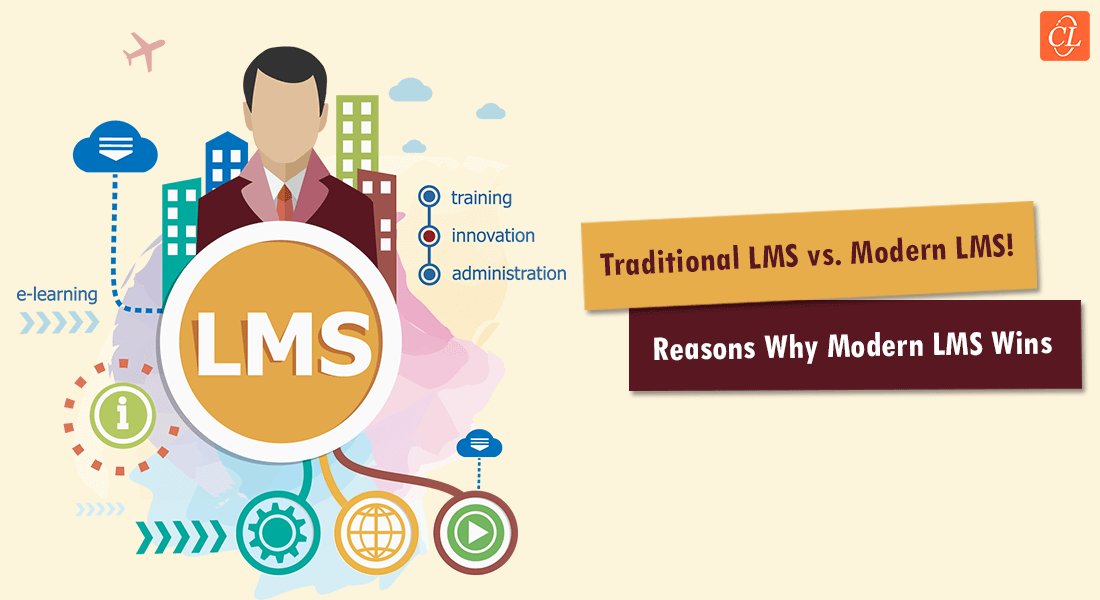Traditional vs. Modern LMS – How Different Are They?

Are you using a traditional learning management system (LMS) or a more modern, germane Learning Management System in your organization? If answering this question confuses you, you are definitely not alone; most of the LMS users miss the point in understanding the key differences between these two types of LMSs.
Over the last few years, eLearning has moved from being a niche type of learning for monotonous subjects, to being the preferred and more or less indispensable way of teaching and learning EVERYTHING. Technology is growing and the unrelenting needs and desires of learners to learn at their own time and pace is making eLearning the goal for many. Similarly, LMSs are also evolving to meet changing employee preferences and business needs.
Features of Traditional vs. Modern Learning Systems
The earlier versions of LMSs traditionally focused on course administration, classroom management, and learner enrollment. Traditional LMSs were more like software applications, which were admin focused, with a lot of complicated and cumbersome navigation features. They had more than what learners needed, with steep learning curves, lessening the course completion rates of learners, due to the complexities in navigation.
On the other hand, Modern LMSs provide a simple and efficient learning environment, focusing on the efficient distribution of resources. Learners can easily access the training resources on any device, paving the way for a conducive, learner-friendly environment. A seamless LMS is easy to use and the design and structure are intuitive and standardized.
Listed in the table below are a few prominent features of traditional and modern LMSs.
| Traditional LMS | Modern LMS | |
| Learning Mediations Supported | Formal and informal to a certain extent | Formal, Informal, and Social |
| Where they can be Accessed |
|
|
| Reporting and Analytics |
|
|
Effectiveness of Traditional vs. Modern Learning Systems
Whenever there is a mention of technology-aided learning, e-Learning and LMS are spoken of in the same breath. Without a doubt, LMSs have provided the required structure to the concept and flow of e-learning. Various deliberations were made on how a confined structure might hamper the effectiveness of learning, instead of sustaining it.
Michael Hotrum of Athabasca University, Canada, in his paper, “Breaking down the LMS walls”, questions the significance of traditional LMSs in effectively imparting knowledge, in contrast to passing on information. According to Hotrum, the major objective of traditional LMSs was to efficiently transfer information, which was followed by tracking and assessing the transfer. That resulted in successfully fulfilling the learning objectives, but the snags of the system became more apparent.
A few of the snags are:
Lack of motivation for the learners: In the classroom scenario, there is a teacher/instructor and fellow learners, whereas learning via the LMS was a secluded experience, leaving the learner with no control or connection with the content.
One-size-fits-all approach: Learners learn differently and each learner possess a unique style of learning. Traditional LMSs failed to address this need of learners. On the other hand, modern LMSs are learner-centric and with the concept of Gamification, modern LMSs fascinate learners and motivate them to complete the courses.
Traditional vs. Modern Learning Systems – The Differences
Modern LMSs create a learner-centric environment, where the learner is not just an inactive recipient of information, but actively participates in the process of learning.
Here are some of the key traits that distinguish the modern LMS from a traditional one:
Learner Involvement
Modern LMSs are not just about rote learning, they also have built-in quizzes, tests, and interactivities, which ensure learner involvement in the course. These interactive elements help learners comprehend the concepts well, thereby improving the rates of retention.
Gamified Learning
Unlike traditional LMSs, modern LMSs provide a gamified environment to learners, making it more engaging and interactive, enabling learners to complete courses, all while having a fun learning experience. Based on the number of courses completed, the rank on the leaderboard will increase.
Easy Analytics
Apart from providing a holistic learning experience to learners, modern LMSs provide good reporting and tracking provisions, to admins. With the reporting data that is made available, admins can ensure better learner management. It allows them to keep track of each learner’s ability to complete courses and help them in case they lag behind.
Collaborative Learning with Digital Repositories
Modern LMSs are integrated with enhanced collaborative tools, such as journals, blogs, wikis, chats, discussion forums, social media, etc., which help learners learn through mutual collaboration. They make learning more intuitive and increase interaction. The easy and intuitive navigation of social and collaborations tools makes the interface more appealing to learners.
Mobile learning
Modern LMSs are in-tune with the needs of the new-age learner, providing a mobile compatible atmosphere. This allows learners to access their courses remotely, anywhere, anytime.
Audio/Visual Simulations
With traditional LMSs, organizations would not allow learners to download audio-visuals and simulations as they posed a security threat. However, with modern LMSs, this issue is resolved as LMSs have video-players integrated in them.
LMSs today, are loaded with a host of functionalities. It is a testament to the fact that an LMS is more than just being a means of delivery. Ponder on the learning goals of your learners and plan on the switch from the traditional LMS to a more modern one.





![Impact of AI-driven Corporate Training: The Upsides and Downsides [Infographic]](https://blog.commlabindia.com/hubfs/ai-training-impact-infographic.jpg)